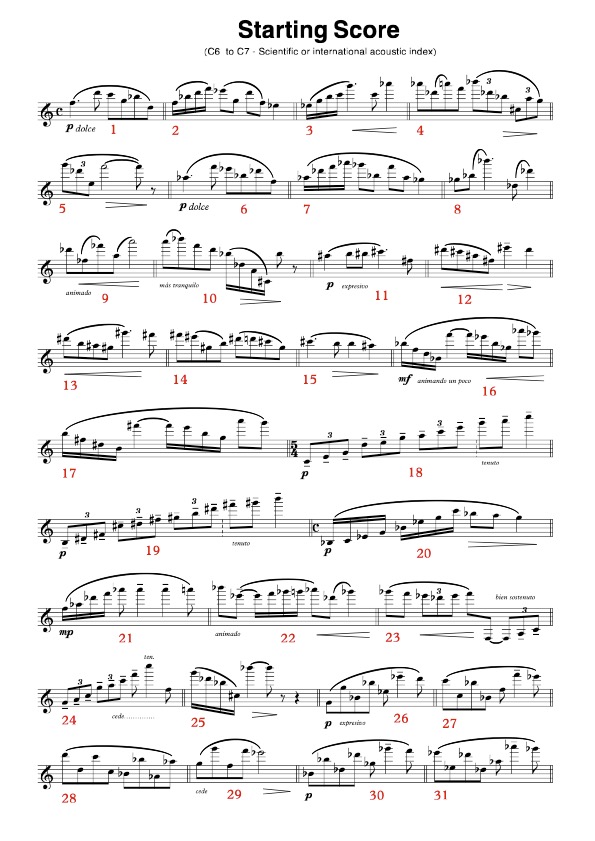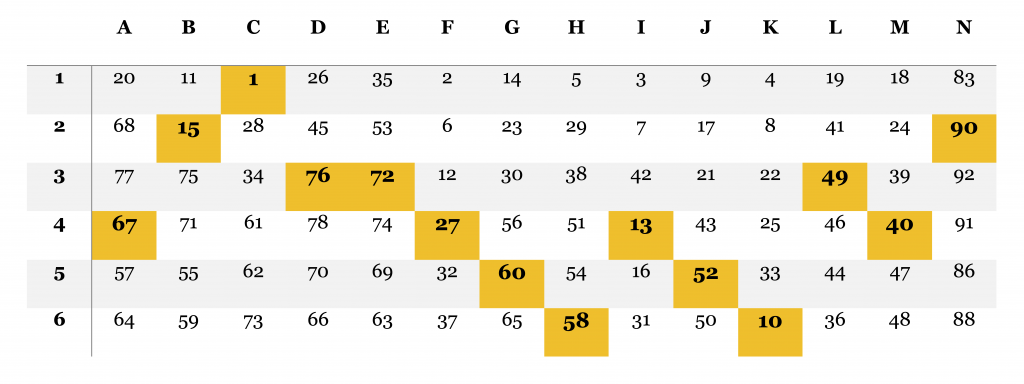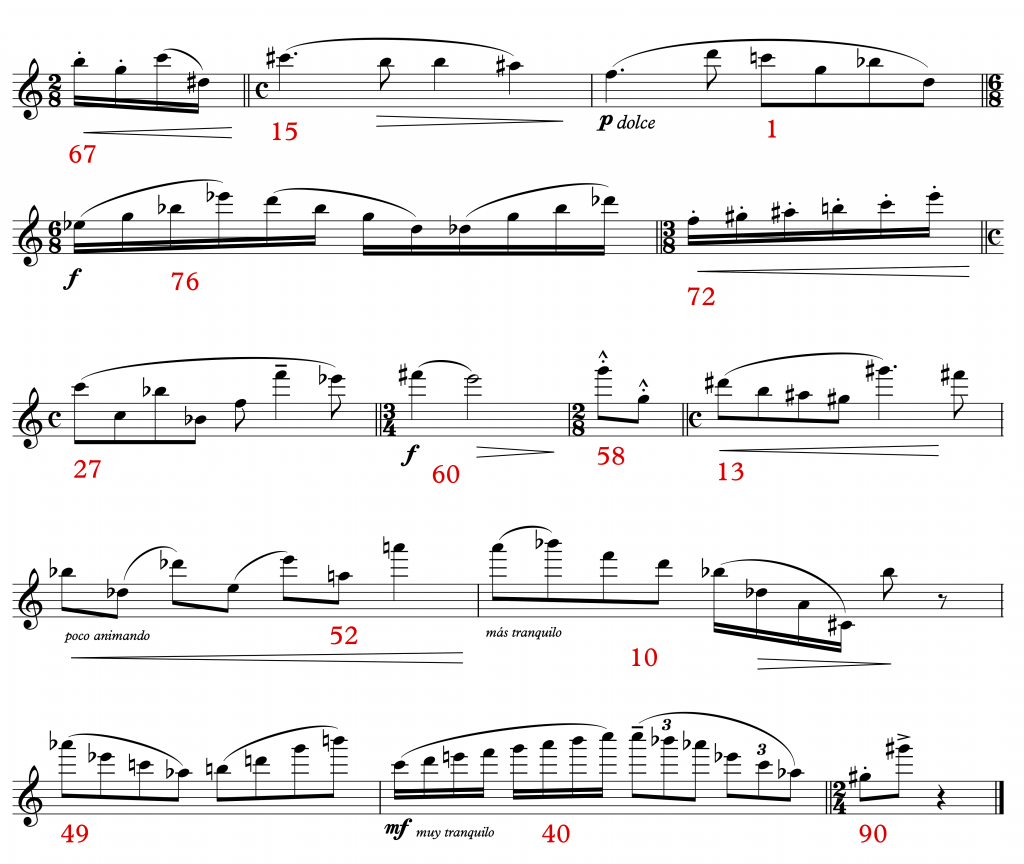
Originally published in The Clarinet 51/3 (June 2024).
Copies of The Clarinet are available for ICA members.
Etude
Teaching the Altissimo Register of the Clarinet With a Musikalisches Würfelspiel (Musical Dice Game).
by Rafael Lopez Marchal
Click here for the Spanish Version
The Musikalisches Würfelspiel (German for “musical dice game”) was a system whereby dice were used to randomly generate music from a starting score. This type of game was very popular in Western Europe in the 18th century; different games of this type were devised, even some that did not require dice, and whose mechanics consisted simply in choosing a number at random. The first known example with extant score is by Johann Philipp Kirnberger: Der allezeit fertige Polonoisen – und Menuettencomponist (1756).[1] This work allows the creation of three works: a polonaise, a minuet and a trio.[2] Conceived for string quartet, it is a work that requires only one die in its interpretation. Thus, there is an interesting harmonic parallelism with Mozart’s minuet in G major K.1/1e.[3]
Introduction
The following didactic resource is based on a clarinet pedagogical approach incorporating controlled randomness. There is a rather complicated subject that every clarinetist must control in order to advance in the interpretation of the clarinet repertoire: the altissimo register.
In the Starting Score there are 92 bars with technical passages that are considered important to work on in order to perfect this register.
In the Tables of Figures three levels are included, with columns corresponding to increasing range, and six rows which represent the numbers of a conventional die.
Columns (notes from high C to altissimo C):
A: high C
B: C♯/D♭
C: D
D: D♯/E♭
E: E
F: Basic Level: Final bars of C to E; Intermediate and Advanced: F
G: F♯/G♭
H: G
I: Intermediate Level: Final bars of E to G; Advanced Level: G♯/A♭
J: A
K: A♯/B♭
L: B
M: C
N: Final bars of G to C
Starting Score

Tables of Figures
Basic Level
(high C to altissimo E)

Intermediate Level
(high C to altissimo G)

Advanced Level
(high C to altissimo C)

How to Play
- Choose which table will be used: basic, intermediate, or advanced. In this example, the advanced table was used.
- Roll a die once for each column to select a row from 1 to 6. For example, the first roll was a 4, so in column A we selected bar 67. The second roll was a 2, so for column B the measure is 15.
The resulting table and score is shown in Example 1.


Interpretive instructions
Measures shall be played at a moderate speed (quarter=50-72) and in the case of a change of time signature, we will keep the eighth note pulse consistent. The dynamic nuance indicated in the bar will be maintained until another bar is indicated. If the first bar of the resulting score has no dynamic indication, start at mf. Tempo changes will only take effect in the measure in which they appear; perform an a tempo in the following measure.
Adaptation of practical exercises
These tables provide a great number of possibilities, but two more types of scores can be created which will make this musical game reach an optimum pedagogical level of quality.
- Focus on problem notes: If there are any particular notes that need to be reinforced, we can locate the problem and make a dice game on that column exclusively. For example, if you have problems on high clarion C, you would select column A and make six rolls of the dice, arranging the bars according to the order in which they were rolled. If a repeated number is rolled, count the number from the last bar selected, skipping those that are already attributed to other rolls.
- Change the chromatic order: As can be seen, the columns have an ascending chromatic order, which can be varied with another roll of the dice on the main row.
The last column of each level must remain so. Only the order of the remaining columns can be changed. If a number is repeated, we will count that number from the last row selected, skipping those already attributed to other rolls.
[1] Johann Philipp Kirnberger, Der allezeit fertige Polonoisen–und Menuettencomponist, Edición de Leon Stefanija.
[2] The system is similar to that of the pieces published by Simrock in 1792 and attributed (dubiously) to Mozart as K516f.
[3] B. Syroyid, “El sigilo aleatorio en Mozart.” Revista de compositores ACIM, 2012.
 Rafael S. López Marchal has a university degree and a postgraduate degree in clarinet at the RCSM Madrid with Mr. Justo Sanz and a master’s degree in musical research from UNIR. In 2014 he published a clarinet technique method titled Las Escalas en el Clarinete: Método de interiorización de patrones técnicos. He is president of the Spanish Clarinet Association.
Rafael S. López Marchal has a university degree and a postgraduate degree in clarinet at the RCSM Madrid with Mr. Justo Sanz and a master’s degree in musical research from UNIR. In 2014 he published a clarinet technique method titled Las Escalas en el Clarinete: Método de interiorización de patrones técnicos. He is president of the Spanish Clarinet Association.
Comments are closed.